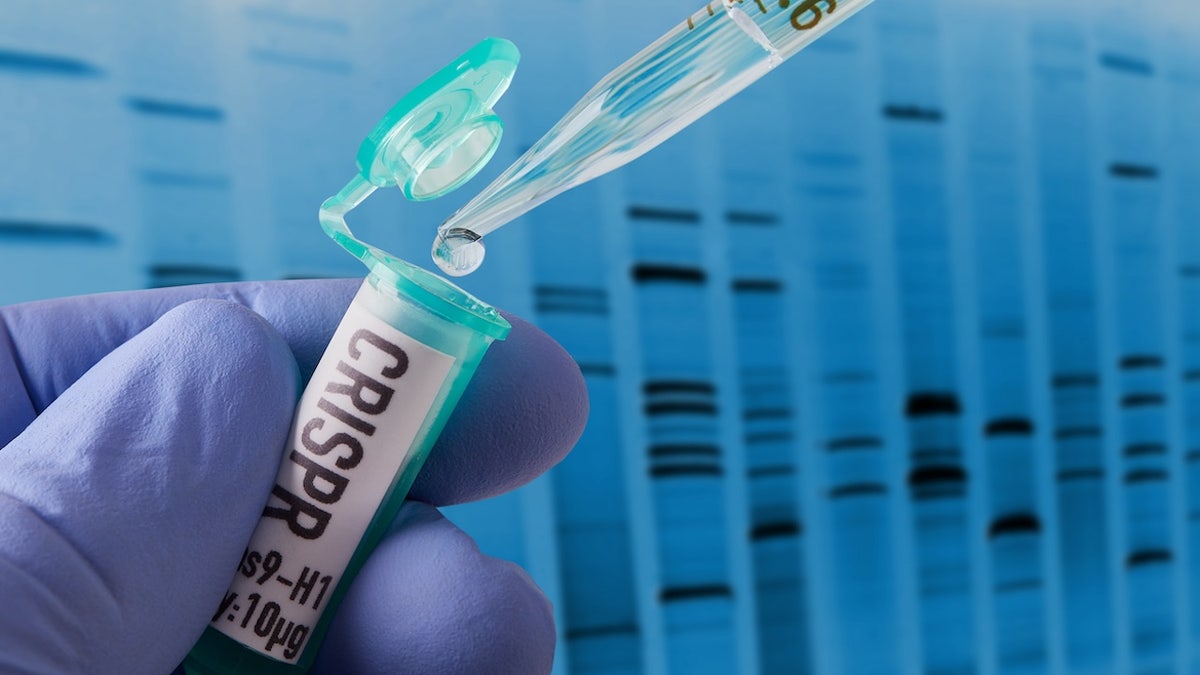Since Alzheimer’s disease now affects seven million Americans – the largest number so far – there is a growing demand for new treatment.
University of California, Irvin scientists have discovered a “groundbreaking” new therapy to fight the disease.
According to a UCI press release, stem cells are involved in human resistant cells, known as “programs” in the brain to deal with the symptoms of the brain.
Alzheimer’s rates reached the stunned number, calling for a change in experts
Microgoia is a resistant cell that is found in the central nervous system that acts as the “primary line of defense infection and injury” in the central nervous system, according to rescapers.
Using CRISPR gene editing, scientists did the cells to produce an enzyme called Neprilicin, which is shown to break the toxic beta-amyleoid blade made by Alzheimer’s brain.
Since Alzheimer’s disease now affects seven million Americans – the largest number so far – there is a growing demand for new treatment. (Estock)
In the rat’s brain, engineering cells have been found to preserve neurons, reduce inflammation, reduce beta-ameloid build-up, and reduce the opposite neurodizerization, researchers have discovered.
This research, which is funded by the National Health Institutes, was published in the cell stem cell journal.
‘I am a neurologist – here why dementia is growing and how to reduce your risk’
“The supply of biology to the brain has been a major challenge for a long time due to blood-brain barrier,” co-authors Matthew Blarton-Jones, a professor of neurobiology and behavior, said.
“We have created a programmable, living delivery system that lives in the brain itself and surrounds the problem by reacting only when and where needed.”
Programs -cells noticed only amyloid plaques, researchers mentioned, which makes this approach “highly targeted yet widely effective”.
“We have created a programmable, living delivery system that lives in the brain itself and surrounds the problem by reacting only when and where needed.”
The survey also found that microgilia may be effective in fighting other central nervous system disorders such as brain cancer and multiple sclerosis.
“This work opens the door to a whole new class of brain therapy,” Robert Sea Spitel, Professor of Pharmaceutical Sciences, said in the notice.
“We are listed as a synthetic drug or viral vector without using the brain resistant cells as the right delivery” “

Using CRISPR gene editing, scientists did the cells to produce an enzyme called Neprilicin, which is shown to break the toxic beta-amyleoid blade made by Alzheimer’s brain. (Estock)
Dr Joel Salinas, a behavioral neurologist and associate professor at the NYU Grsman School of Medicine, says the study is a “impressive evidence of the concept” for a very target and reactionary brain therapy.
“One of the most exciting aspects is that instead of giving up treatment across the brain, these modified cells are active only where there is disease-related damage,” Salinus, who was not involved in research, told Fox News Digital.
Wonderful link to share blood pressure and dementia risk, offering study
“This type of target verbs can restrict the damage to healthy brain tissues, reduce side effects and help to concentrate on the effects of treatment where they are most needed” “
Although the results are still limited to the primary and rats, Salinus mentions that this technique opens a “committed new Avenue”.

Although the results are still limited to the primary and rats, the technique opens a “committed new Avenue”, a neurologist mentioned. (Estock)
Looking at the front, researchers have aimed to manage human trials, to reduce the risk of rejecting resistance using stem cells from each individual patient.
“If future studies show that this method is safe, durable and effective in humans, it is not only for Alzheimer, but the processes of the disease are made of patches or locally, such as brain tumors, multiple sclerosis or other neurodigenarantic diseases dementia,” said Salinus. “
Click here to get Fox News app
The director of the Scientific Baghdan of the Alzheimers Association of Chicago, PhD Courtney Klos also reviewed the results of UCI’s study.
He told Fox News Digital, “The strategic research fund is important to make the treatment pipeline more widening for Alzheimer and other diseases,” he told Fox News Digital, “he told Fox News Digital.
Click here to sign up for our health newsletter
“It is equally important to explore the methods of providing different drugs such as using genetically altered cells in this newly published study.”
Clos mentions that these searchs are committed and optimistic, but initial.

A representative from the Alzheimer Association noted, “Additional research is required to determine how the process of supplying such drugs can affect the people who live in at risk.” (Estock)
“The process of supplying such drugs is needed to determine how the process of supplying such drugs can affect the people who live in at risk,” he said.
“This work was done in animals’ models; the authors emphasized the importance of this study to advance to clinical trials in people to understand the possibility of treating this drug.”
For further health articles, see www.foxnews.com/health
In addition to the NIH, the study received support from the California Institute for Regenerative Medicine and Kure Alzheimer Fund.
Leave a Reply